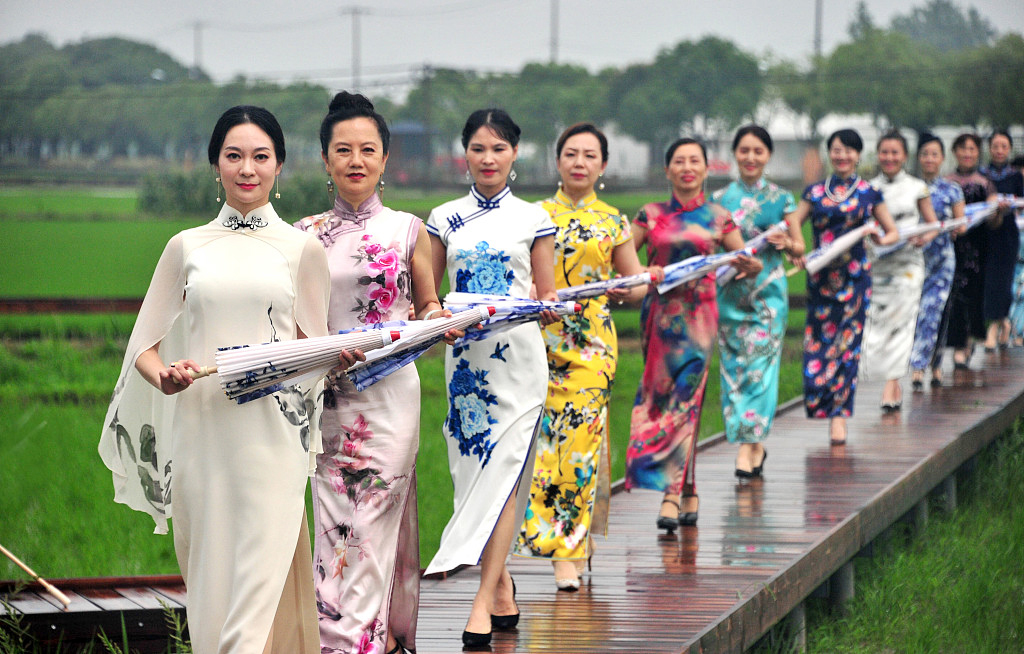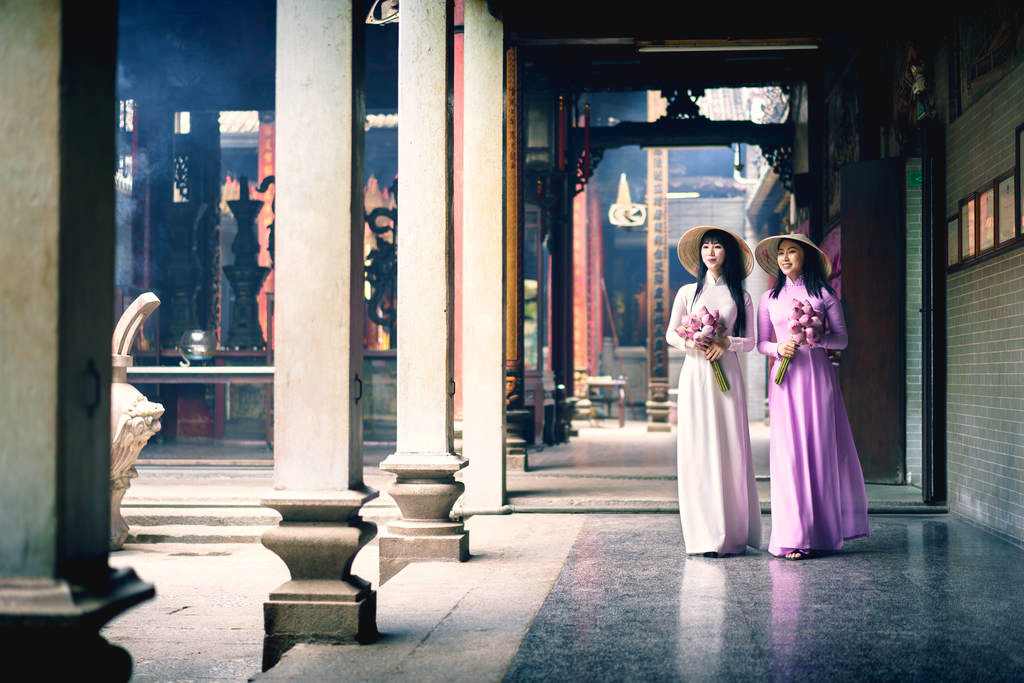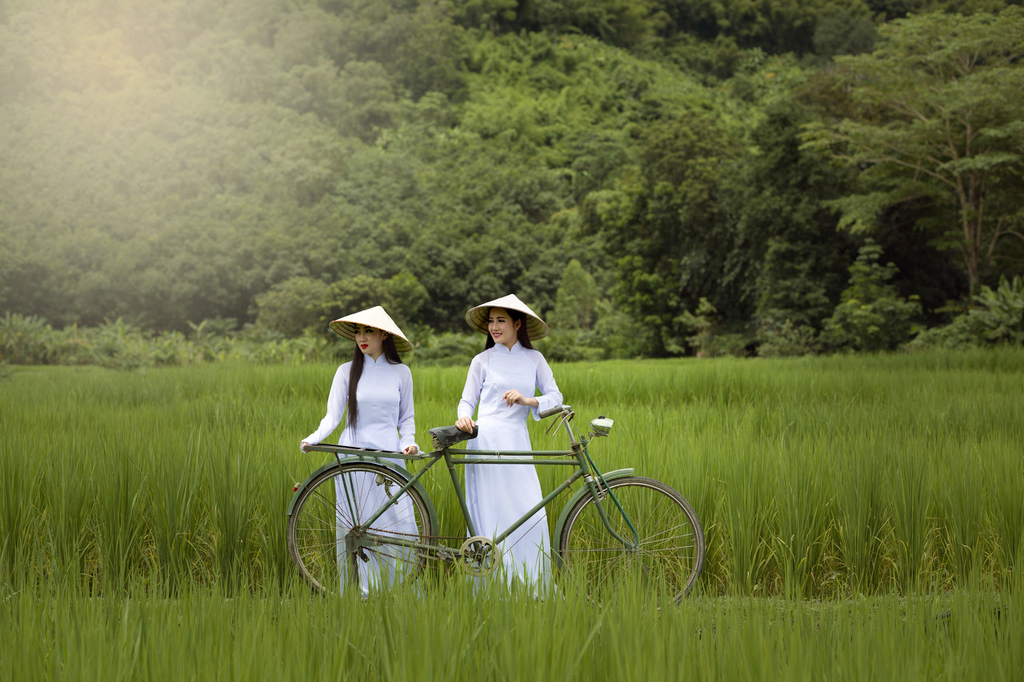
A group of Chinese women wearing various qipao walk on a field path. /CFP
A group of Chinese women wearing various qipao walk on a field path. /CFP

A Chinese woman wears a qipao. /CFP
A Chinese woman wears a qipao. /CFP

An undated photo shows two Vietnamese women wearing ao dai. /IC
An undated photo shows two Vietnamese women wearing ao dai. /IC

An undated photo shows two Vietnamese women wearing ao dai. /IC
An undated photo shows two Vietnamese women wearing ao dai. /IC
Traditional clothing is a cultural symbol of the countries they come from. The cheongsam, also known as the qipao, is a traditional and iconic Chinese dress characterized by its high-necked collar, fitted form, and side slits. It's dubbed the "national dress" for women in China with a century-long history.
In Vietnam, there is a "national dress" for local women, named ao dai. With a longer history than the qipao, the ao dai is a traditional Vietnamese garment that consists of a long tunic worn over trousers. Extremely similar to the qipao, it's also known for its form-fitting style, high collar, and side slits.
The qipao, however, typically has a straight skirt, while the ao dai features a more flared design. In addition, the ao dai is often worn with loose trousers, while the qipao is worn as a one-piece dress. Both of them are respectively considered as representations of the Chinese and Vietnamese cultures.





